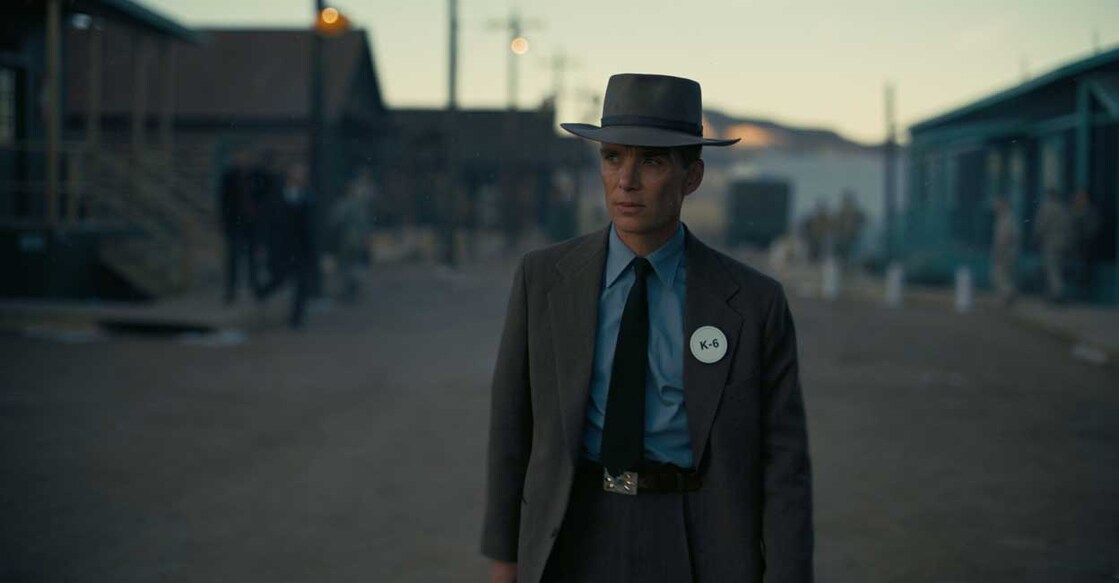'Oppenheimer' review: Nolan's ingenious blend of science and drama

Mail This Article
In the vast constellation of brilliant minds that have graced the realm of physics, there emerges a luminary that outshines them all—J Robert Oppenheimer. Revered as one of the greatest physicists to have ever walked the Earth, he commands an unparalleled intellect that dances on the precipice of genius and madness. Yet, it is this very duality that has shrouded his legacy in controversy, rendering his story a fascinating enigma that has deeply intrigued hearts and minds across the globe.
Now, envision this epic tale of scientific virtuosity and moral turmoil transformed into a grand cinematic opus—the masterful work of visionary filmmaker, Christopher Nolan. 'Oppenheimer' is a fascinating symphony of light and shadow, meticulously crafted to evoke introspection and unwavering emotion. Oppenheimer may not offer the same mind-bending spectacle as Interstellar or The Dark Knight, as it remains firmly rooted in historical facts. Nevertheless, it is sure to leave you astounded with its innovative portrayal. From the very outset, the audience is well-informed about what lies ahead—the detonation of the atomic bomb. While avoiding any major spoilers, it's essential to highlight that the movie's pivotal moment revolves around the Trinity nuclear test in New Mexico—an utterly mind-boggling sequence.
Cillian Murphy takes on the remarkable role of the great physicist, while Hollywood heavyweights like Robert Downey Jr portray Lewis Strauss, Emily Blunt embodies Oppenheimer's wife Kitty, and Matt Damon portrays General Groves—these are just a few of the notable names in the cast, with many others following suit. Christopher Nolan's collaboration with Murphy has proven to be a true gem, and their partnership reaches new heights with 'Oppenheimer'.
Murphy's portrayal of Oppenheimer is nothing short of masterful, displaying an effortless finesse that brings the character to life. His performance is marked by remarkable composure, delicately handling the complexities of the role. One particular scene stands out, where Oppenheimer's elation after the successful bomb testing is evident. In that moment, it's not merely an actor laughing, but a genuine reflection of the real Dr Oppenheimer's emotions.
The movie presents a fascinating conflict, as viewers grapple with their moral compass while delving into both the film's narrative and historical events. Christopher Nolan, ever mindful of the subject matter, handles this delicate balance with precision. The movie skillfully weaves back and forth in time, juxtaposing scenes in black and white with those in colour. Through this approach, the audience is taken on a journey through the aftermath of the bomb's detonation and the events that led to its creation.
Drawing a parallel with Nolan's 2001 film 'Memento,' the audience can observe a similar use of black and white imagery. However, while 'Memento' employed black and white to represent time, in Oppenheimer, it serves to symbolize shifting perspectives.
While some may argue that Oppenheimer isn't Christopher Nolan's absolute masterpiece, it still holds its ground firmly. Certain scenes may draw parallels to the courtroom drama 'The Trial of the Chicago 7'. However, unlike some of Nolan's other films, Oppenheimer doesn't demand an arduous decoding process, although having a grasp of physics could be beneficial. The movie's strength lies in its magnetic background score and skillfully chosen colour palettes, making it an unmissable cinematic spectacle for the audience.
The movie ignites with fiery sparks, and numerous sequences display sheer brilliance. Nolan masterfully crafts anticipation with each passing scene, delighting the audience with visually stunning cinematography—a hallmark of his directorial prowess. The film benefits greatly from an exceptional cast and crew, which contributes to Oppenheimer's radiant shine throughout.


